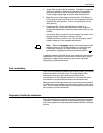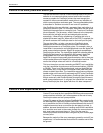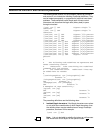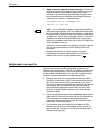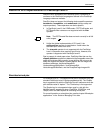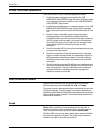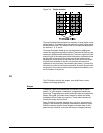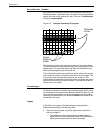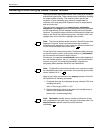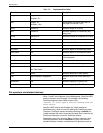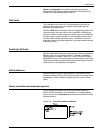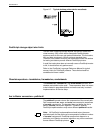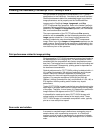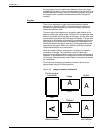
POSTSCRIPT
XEROX DOCUPRINT NPS GUIDE TO USING PAGE DESCRIPTION LANGUAGES 2-21
— The resolution of the source image (sample image) is lower
than the device space, and the scaling of source-image-to-
device space is an integer multiple and rotation is in
multiples of 90 degrees.
• Scan Conversion paints any pixel whose square region
intersects the shape if the resolution of the source image is
lower than that of device space, and the scaling between
source image and device space is not an integer multiple.
This effect is noticeable when you are printing a sampled image with
a resolution of less than 600 dpi on the printer at 600 dpi.
Image quality
DocuPrint NPS output is superior to that of other printers that use
“write-black” technology in the following areas:
• Black regions are darker.
• Fonts of small point sizes are more readable.
• Single-pixel-wide white lines on a black background are visible.
Note: The DocuPrint 92C NPS can produce a single-pixel line.
However, because of the many variables involved, such as print
density settings and line placement on the page, Xerox cannot
guarantee the quality of these single-pixel lines. Specific questions
regarding single-pixel line printing for your application should be
directed to your Xerox service engineer.
Some user-defined fonts use either outlines or bitmaps that are tuned
to write-black printers. As a result, these fonts appear light on the
Xerox DocuPrint printers. Character rasterization for fonts that use
PostScript painting operators is subject to the scan conversion rules
described earlier in this chapter.
It is often difficult to determine if a PostScript master uses user-
defined fonts. To do so requires studying the master in detail, unless
the creator has followed the standards suggested in the PostScript
reference manual and specified the fonts used by the document in a
PostScript comment format. An example of this format is:
%%DocumentFonts: { <fontname> ...}
%%DocumentSuppliedFonts:{ <fontname> ...}
However, if the character shapes seem poorly rasterized, user-
defined fonts probably are contained in the master. When possible,
use Type 1 fonts, which are rasterized through special techniques,
for best output quality.
Note that the DocuPrint PostScript interpreter applies thickening to
certain graphics-rendering operations. For example, outline fonts in
the Type 1 format are subject to rasterization techniques that use
thickening for best quality of text rendering on Xerox devices.



